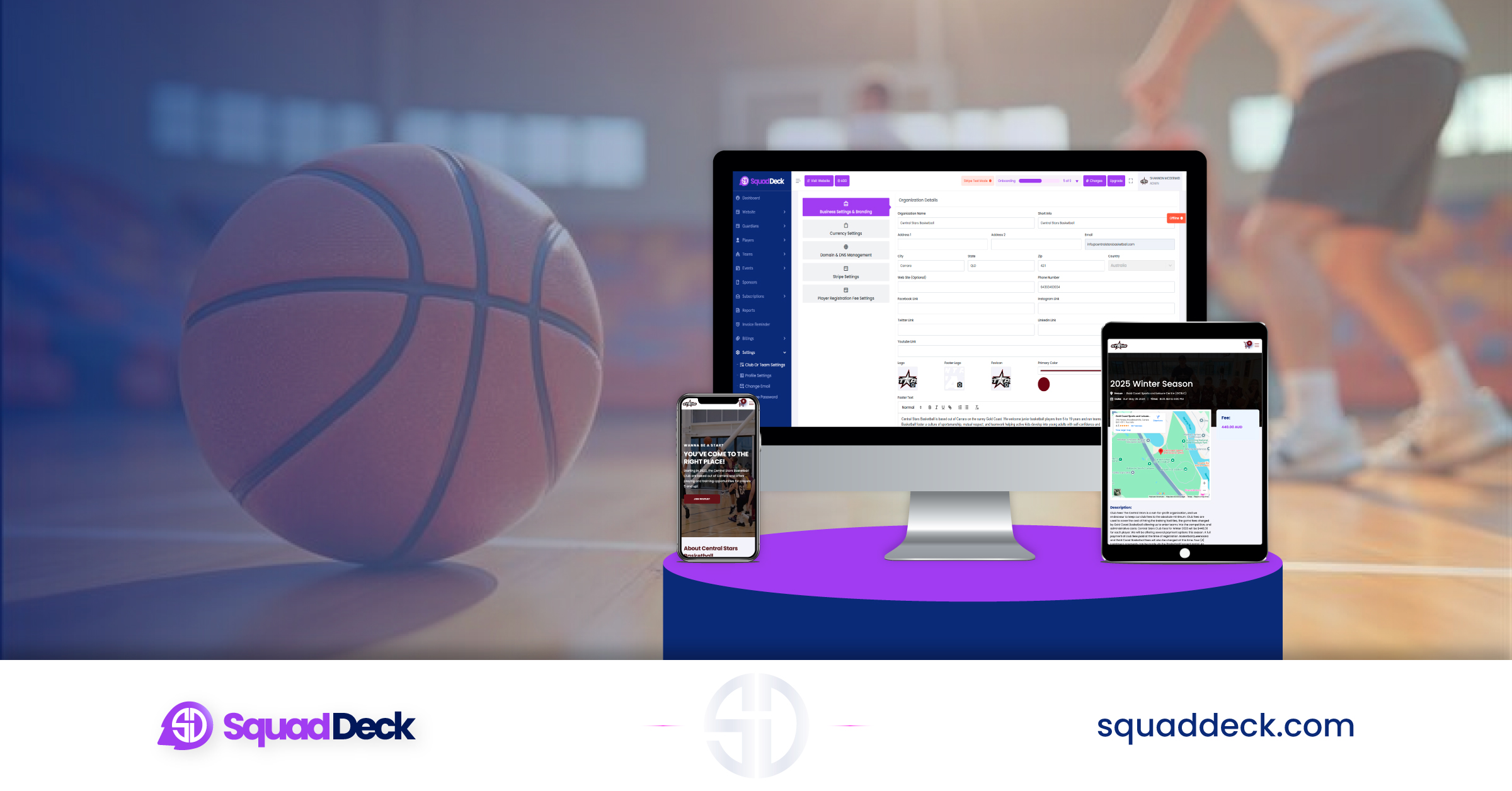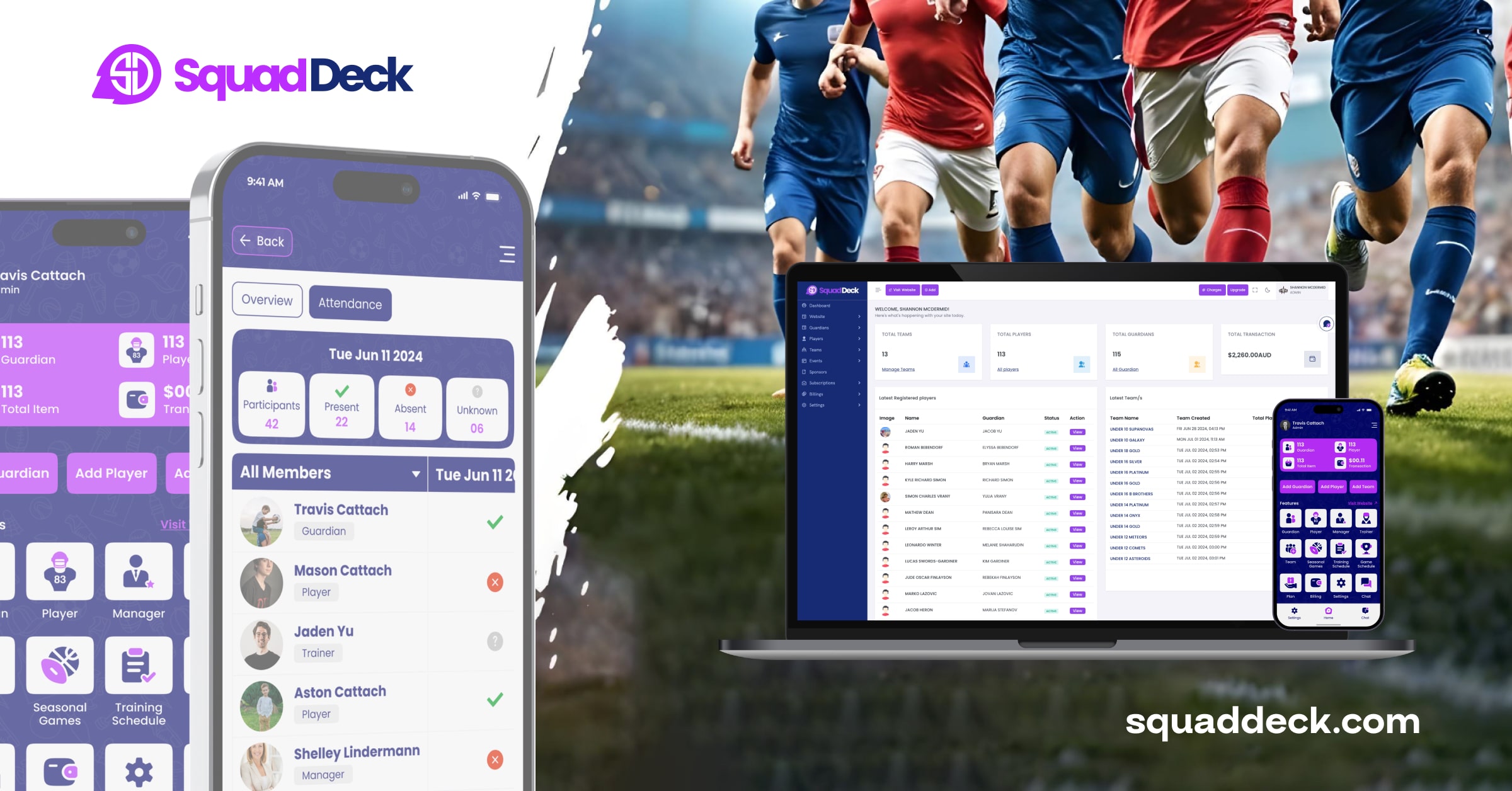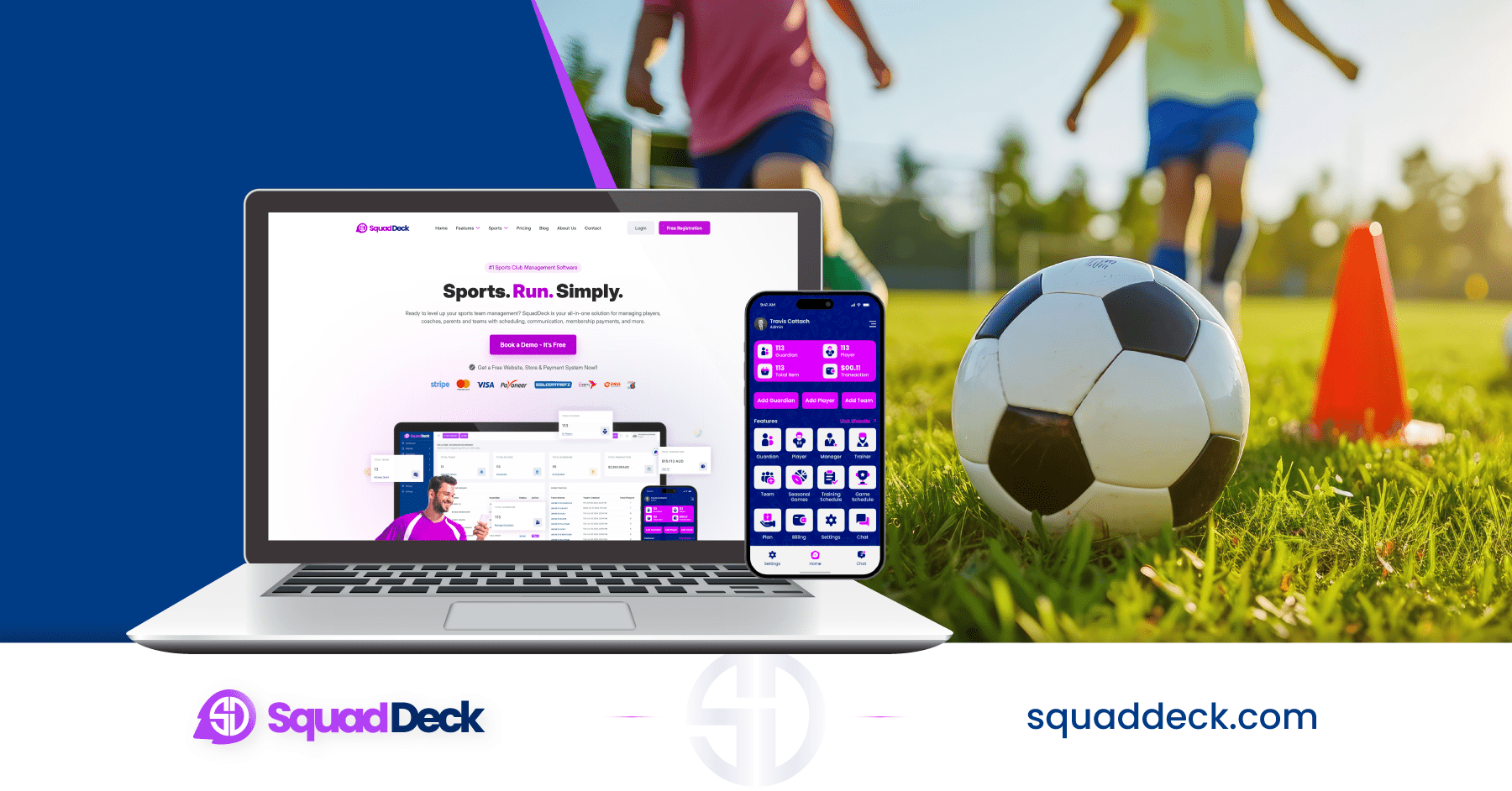Top 8 Steps to Get Your Youth Football Team Up and Running for the Season
Youth football teams play an important role in the development of young athletes both on and off the field. Running a youth football team could be difficult in startup. Here are 8 guidelines to Get Your Youth Football Team Up and Running for the Season. provide an opportunity for children to learn valuable life skills such as teamwork, discipline, and sportsmanship, while also promoting physical fitness and a healthy lifestyle.
Starting a youth football team can be a rewarding experience for coaches, parents, and players alike. Not only does it provide a chance to give back to the community, but it also offers an opportunity to create a positive impact on the lives of young athletes.
In order to start a successful youth football team, it is important to have a clear vision and set achievable goals and objectives. Recruiting qualified coaches and volunteers, securing practice and game fields, establishing a budget, registering with a league, scheduling games and practices, purchasing equipment and uniforms, and holding a parent meeting and first practice are all essential steps to kick off a successful season.
Step-01: Defining Your Goals & Objectives for Youth Football Team Up and Running
Before you begin the process of starting a youth football team, it’s important to define your goals and objectives. What is your vision for the team? What do you hope to accomplish? By setting clear goals and objectives, you’ll be better equipped to make decisions throughout the season.
Creating achievable goals and objectives
Start by considering the age range and level of play for your team. Will you be coaching a team of younger children or older teenagers? Will you be competing in a recreational league or a more competitive league? This will help you determine what type of practices and games to plan for.
Determining the age range and level of play for your team
Next, establish a vision for your team. This could be anything from fostering a love for the game to winning championships. Whatever your vision may be, make sure it aligns with the interests and abilities of your players.
Finally, create achievable goals and objectives. This could include developing players’ skills, building team cohesion, or winning a certain number of games. Be sure to set realistic expectations and communicate them clearly to players, parents, and coaches. With a clear vision and well-defined goals, you’ll be well on your way to starting a successful youth football team.
Step-02: Recruit Coaches and Volunteers

Starting a youth football team is recruiting coaches and volunteers. Finding qualified coaches is essential to the success of your team. You’ll need coaches who can teach basic football skills, motivate players, and create a safe and positive environment. You can search for coaches through personal connections, local high schools or colleges, or through online job boards.
Identifying volunteers for team support
Identifying volunteers for team support is also important. Volunteers can help with a range of tasks, from managing equipment to fundraising. You can find volunteers by reaching out to parents, posting on social media, or asking for referrals from existing volunteers.
Conducting background checks and training for all volunteers
Conducting background checks and training for all volunteers is crucial to ensure the safety of the players. Background checks can help you identify any potential issues, such as criminal records or prior child abuse allegations. You should also provide training for all volunteers to ensure they understand your team’s policies and procedures, as well as any necessary safety protocols. By taking these steps, you’ll create a safe and supportive environment for your players and volunteers.
Step-03: Secure Practice and Game Fields
Securing practice and game fields is a crucial step in starting a youth football team. Without access to proper fields, it will be impossible to conduct regular practices and games. The first step is to research available fields in your area. This can include fields at local schools, parks, or community centres. Once you have a list of potential fields, it’s time to contact the local parks and recreation department to inquire about field usage. Many times, they will have information about field availability, rental fees, and any required permits or insurance.
When negotiating agreements for field usage, it’s important to clearly define the terms of the agreement. This can include the days and times the field will be used, the length of the rental period, and any fees or deposits required. It’s also important to clarify any rules or regulations associated with the field and ensure that all coaches and players understand and adhere to them. Overall, securing practice and game fields requires some effort and negotiation, but it’s an essential step towards a successful youth football season.
Step-04: Establish a Budget for Overall Planning
Establishing a budget is a critical step in starting a youth football team. It’s essential to create a comprehensive budget that covers all aspects of the team’s operations, from equipment and uniforms to field rentals and league fees. Having a clear understanding of your team’s expenses and revenue sources is essential to ensuring that your team can operate smoothly throughout the season.
Identifying funding sources such as sponsorship and fundraising
Identifying potential funding sources such as sponsorships and fundraising can also help offset some of the costs associated with starting and maintaining a youth football team. Many local businesses and organisations are willing to support youth sports teams in their communities, so it’s worth exploring these options.
Monitoring and managing expenses throughout the season
Monitoring and managing expenses throughout the season is equally important. This will help you track your team’s financial performance and make necessary adjustments as needed. It’s crucial to maintain accurate records and regularly review your budget to ensure that your team stays on track financially.
Overall, establishing a budget is critical to the success of your youth football team. It will help you manage costs, identify potential revenue sources, and ensure that your team can operate effectively and sustainably throughout the season.
Step-05: Register Your Team with a League
 Registering your youth football team with a league is a critical step in starting your season. Researching local youth football leagues can help you find a league that aligns with your team’s goals and objectives. Look for leagues that prioritise player development, safety, and sportsmanship. It is important to choose a league that offers a level of play that is appropriate for your team’s age and skill level.
Registering your youth football team with a league is a critical step in starting your season. Researching local youth football leagues can help you find a league that aligns with your team’s goals and objectives. Look for leagues that prioritise player development, safety, and sportsmanship. It is important to choose a league that offers a level of play that is appropriate for your team’s age and skill level.
Choosing a league that aligns with your team’s goals and objectives
Once you have identified a suitable league, you will need to register your team and pay the league fees. This typically involves submitting necessary paperwork, such as player registration forms and proof of age. Many leagues also require background checks for coaches and volunteers.
Registering your team and paying league fees
Registering your team with a league not only ensures that you have a schedule of games and opponents for the season, but it also provides access to additional resources and support. Many leagues offer coaching clinics and training for volunteers, as well as access to league rules and regulations.
Take the time to research and choose a league that aligns with your team’s goals and objectives, and don’t hesitate to ask questions or seek guidance from league officials. Registering your team with a league is a crucial step in starting a successful youth football season.
Step-06: Schedule Games and Practices
Once you have your team formed and your coaches and volunteers in place, it’s time to start scheduling games and practices. Creating a practice schedule that works for both your team and coaches is essential to ensure that everyone can attend and get the most out of each practice session. Consider factors such as school schedules, other extracurricular activities, and any potential conflicts when setting your practice schedule.
Scheduling games with other teams and Reserving fields
When it comes to scheduling games, research the other teams in your league and determine which ones are the best fit for your team based on skill level and availability. Once you have identified the teams you would like to play against, you can begin coordinating game days and times. It’s important to reserve fields and communicate regularly with other teams to ensure that everything runs smoothly on game day.
Remember that scheduling can be a fluid process, and it’s important to remain flexible and adaptable. Weather, unforeseen events, and other factors can impact your schedule, so be prepared to make changes as needed. By taking the time to carefully schedule practices and games, you’ll be setting your team up for success throughout the season.
Step-07: Purchase Equipment and Uniforms
 Starting a youth football team is purchasing the necessary equipment and uniforms. This is a crucial step that requires careful consideration and planning. Researching the necessary equipment and uniform requirements is essential to ensure that all players are properly outfitted for safety and comfort. You will need to identify vendors and compare prices to ensure that you are getting the best quality equipment and uniforms at an affordable price. Some common equipment includes helmets, shoulder pads, mouthguards, cleats, and footballs.
Starting a youth football team is purchasing the necessary equipment and uniforms. This is a crucial step that requires careful consideration and planning. Researching the necessary equipment and uniform requirements is essential to ensure that all players are properly outfitted for safety and comfort. You will need to identify vendors and compare prices to ensure that you are getting the best quality equipment and uniforms at an affordable price. Some common equipment includes helmets, shoulder pads, mouthguards, cleats, and footballs.
Identifying vendors and comparing prices
When purchasing equipment and uniforms, it is important to prioritise safety and comfort over aesthetics. You want to make sure that all players are properly protected to prevent injuries. Additionally, make sure that uniforms are comfortable and allow for ease of movement.
Purchasing and distributing equipment and uniforms to players and coaches
Once you have purchased the necessary equipment and uniforms, it is time to distribute them to players and coaches. This can be done at a team meeting or the first practice. Make sure that all players have the proper equipment and that everything fits correctly. Communication with parents is important in case any adjustments need to be made.
Overall, purchasing equipment and uniforms is an important step in starting a youth football team. With careful planning and consideration, you can ensure that all players are outfitted for success on the field.
Step-08: Hold a Parent Meeting and First Practice
Starting a youth football team is to hold a parent meeting and the first team practice. This step is crucial in setting the tone for the season and establishing expectations for both players and parents. The parent meeting should cover team goals, logistics, and expectations for the season, including communication protocols, practice and game schedules, and any volunteer opportunities. This is also an opportunity to answer any questions or concerns that parents may have.
Holding the first team practice and setting the tone for the season
The first team practice is a chance to assess the players’ skills and abilities, assign positions, and establish team rules and expectations. Coaches should use this time to emphasise the importance of safety, good sportsmanship, and teamwork. It’s also important to create a positive and fun atmosphere to encourage players to enjoy the sport and develop their skills.
Communicating regularly with parents and players throughout the season
Regular communication with parents and players throughout the season is crucial to the success of the team. Coaches should provide updates on game schedules, practice times, and any changes to team logistics. They should also provide feedback to players and parents to help players improve their skills and ensure that everyone is on the same page.
In conclusion, holding a parent meeting and first team practice is a critical step in starting a youth football team. It sets the tone for the season, establishes expectations, and creates a positive and fun atmosphere for players. Regular communication throughout the season ensures that everyone is informed and involved in the success of the team.
Starting a youth football team can be a rewarding experience for both the players and the community. The eight steps outlined in this guide can help make the process manageable and successful. It’s important to establish clear goals and objectives, recruit qualified coaches and volunteers, secure practice and game fields, establish a budget, register with a league, schedule games and practices, purchase necessary equipment and uniforms, and hold a parent meeting and first practice.
While it’s essential to prioritise safety and adhere to the rules and regulations of the sport, it’s also important to make the experience fun for the players. By creating a positive and supportive environment, players can develop their skills, build confidence, and make lasting memories.
Starting a youth football team requires dedication, time, and effort, but the benefits are significant. It can provide an opportunity to promote physical activity, develop teamwork and leadership skills, and foster a sense of community. So, if you’re passionate about the sport and have the desire to make a difference, don’t hesitate to take the first step towards starting your own youth football team.
How SquadDeck can help when starting a Youth Football Team
Starting a youth football team can be an exciting and rewarding experience, but it can also be a daunting task. With so many things to organise and manage, it’s easy to get overwhelmed. Fortunately, SquadDeck can help make the process easier and more efficient.
SquadDeck is a sports club management software that offers multiple functionalities to club owners. One of its key features is team management, which can help streamline the process of starting a youth football team. Here’s how SquadDeck can help:
- Roster management: With SquadDeck, you can easily create and manage your team roster. You can add players, assign positions, and track attendance, making it easy to keep everyone organised.
- Communication: SquadDeck offers a communication platform that allows you to communicate with your team and their parents. You can send messages, updates, and schedule changes, all in one place.
- Scheduling: Managing the team schedule can be a challenge, but SquadDeck makes it easy. You can create and share the team schedule with players and parents, and even send reminders about upcoming games and practices.
- Finances: Starting a youth football team can be expensive, but SquadDeck can help you keep track of your finances. You can set up payment plans, track payments, and even send invoices.
- Performance tracking: With SquadDeck, you can track your team’s performance and progress throughout the season. You can track statistics, set goals, and even share progress reports with players and parents.
- Responsive Website & Management: Each sports association will receive their own unique website, with Club Admin having complete access and functionality through a robust CMS system. This website is fully responsive, allowing for effective management of members and games with appropriate branding. Also Read the Quick Guide to Building a Website for Sports Organisation
Overall, SquadDeck is a valuable tool for anyone starting a youth football team. It can help you streamline your operations, communicate with your team and their parents, and track performance and progress. With SquadDeck, you can focus on coaching and developing your team, while leaving the administrative tasks to the software.
Stay Connected With SquadDeck
Stay connected with SquadDeck for the latest news and updates about all Sports. Follow us on social media (Facebook, Linkedin) to get tips and strategies to help optimise your sports organisation‘s website.
We value your opinion! If you have any query about our services, please take a moment to leave a comment below.



















